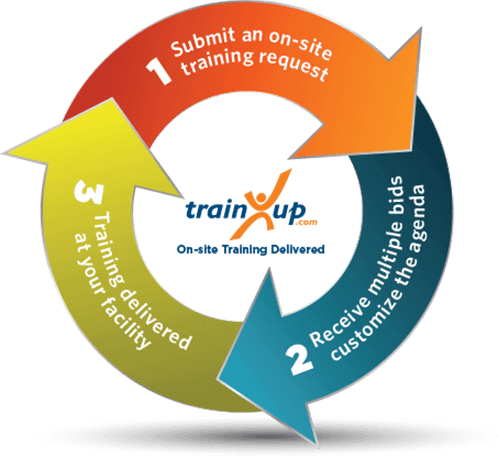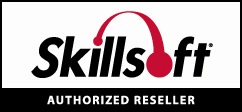
Health Care Training Your Way
Or Choose From 16 Health Care Sub-Categories
- View all Health Care Training Courses
- Assistant - Technician Training In Charlotte, NC
- Cardiology Training In Charlotte, NC
- Chiropractic Training In Charlotte, NC
- Counseling Training In Charlotte, NC
- Dental Training In Charlotte, NC
- First Aid - CPR Training In Charlotte, NC
- Health Information Technology Training In Charlotte, NC
- Healthcare Management Training In Charlotte, NC
- Medical Billing - Coding Training In Charlotte, NC
- Medical Training In Charlotte, NC
- Nursing Training In Charlotte, NC
- Pharmaceutical Training In Charlotte, NC
- Physical Therapy Training In Charlotte, NC
- Radiology Training In Charlotte, NC
- Social Work Training In Charlotte, NC
- Surgery Training In Charlotte, NC
Health Care Training in Charlotte, NC - Medical Classes
TrainUp.com is your one - stop source for finding virtual health care training and courses in Charlotte, North Carolina. TrainUp.com currently lists virtual health care courses and training in and nearby the Charlotte region from 1 of the industry's leading training providers, such as SkillPath and NBI, Inc.. Can't find the course you need? Consider an online health care course or contact us for assistance.
Request Health Care On-Site Training. We bring the best instructors to you.
TrainUp.com is your one - stop source for finding virtual health care training and courses in Charlotte, North Carolina. TrainUp.com currently lists virtual health care courses and training in and nearby the Charlotte region from 1 of the industry's leading training providers, such as SkillPath and NBI, Inc.. Can't find the course you need? Consider an online health care course or contact us for assistance.
Live Training
(1 Classes)
Self-Paced Courses
(26 eLearning Courses)
& Video Collections
(11 Bundles)
Up to 37% off Training
FMLA Compliance Update
Medical Records Basics
Bloodborne Pathogens: Reduce Your Risk of Exposure
The Use of AI in Health Care
Implications of Medical Marijuana in the Workplace
Health Care Reform: Taxation and Accounting Issues
Update to Health Care Background Screening and How to Reduce Hiring Risk
Lean Health Care: Without Compromising Quality Health Care
Medication History and Its Role in Patient Safety
Wrongful Death Medical Lawsuits - Doctor vs. Hospital Liability
Controlling Health Care Costs With Self-Funded Plan Options
Mental Health, Addictive Behaviors & Coping During COVID-19: Intervention Opportunities for Employers
Work Injuries in the Health Care Field
Biomedical Nanotechnology
Health Care Cost Sharing: Spousal Coverage Options
Developing a Smartphone Policy for Health Care Providers
Protecting Against Health Care Fraud: Strategies, Tips and Tricks for Health Care Providers
Biomedical Polymers
Interaction of Health Care Reform With Other Laws
Fundamentals of Health Care Law
Complying With the New Form W-2 Rules for Reporting Health Care Benefits
Retirement Strategies With Increasing Health Care Costs
Providing Guidance for Employees in Health Care Benefits Selection
Troubleshooting your IT issues
Microsoft SharePoint Server 2010 SP1: Configuring
Safety and Security in Your Environment
Fundamentals of Safe Driving and Driver Safety
Complete Guide to California Cal OSHA Workplace Health and Safety Regulations
Employer Employee Safety in 2020
Essential Skills for Business Professionals

Get Up to 20% off Live & Online Training Courses

We’ll Conduct The Course Just For Your Team

Get Up to 20% off eLearning
SCORM /AICC compliant. Upload content to your LMS
We’ll help customize your curriculum. Send us a request today to preview our entire online training catalog

Customized eLearning Solutions
ILT /Virtual Live to eLearning MicroLearning Video Development Mobile Learning Gamified Learning Flash to HTML5 Conversion
TrainUp.com is your one - stop source for finding virtual health care training and courses in Charlotte, North Carolina. TrainUp.com currently lists virtual health care courses and training in and nearby the Charlotte region from 1 of the industry's leading training providers, such as SkillPath and NBI, Inc.. Can't find the course you need? Consider an online health care course or contact us for assistance.

Request Health Care On-Site Training. We bring the best instructors to you.
Related Health Care Training
- Health Care training in New York, NY
- Health Care training in Los Angeles, CA
- Health Care training in Chicago, IL
- Health Care training in Houston, TX
- Health Care training in Philadelphia, PA
- Health Care training in Phoenix, AZ
- Health Care training in San Antonio, TX
- Health Care training in San Diego, CA
- Health Care training in Dallas, TX
- Health Care training in San Jose, CA
- Health Care training in Indianapolis, IN
- Health Care training in Jacksonville, FL
- Health Care training in San Francisco, CA
- Health Care training in Columbus, OH
- Health Care training in Charlotte, NC
- Health Care training in Detroit, MI
- Health Care training in Seattle, WA
- Health Care training in Denver, CO
- Health Care training in Boston, MA
- Health Care training in Oklahoma City, OK
- Health Care training in Las Vegas, NV
- Health Care training in Kansas City, MO
- Health Care training in Atlanta, GA
- Health Care training in Toronto, ON
- Health Care training in Vancouver, BC
- Health Care training
- Counseling training
- Assistant - Technician training
- Nursing training
- Social Work training
- Cardiology training
- Chiropractic training
- Dental training
- First Aid - CPR training
- Health Information Technology training
- Pharmaceutical training
- Physical Therapy training
- Radiology training
- Healthcare Management training
- Medical Billing - Coding training
- Surgery training
- Medical training
Join The 50,000+ Companies That Have Purchased Training from TrainUp.com
-
50K+ Companies Trained
Including 90% Of Fortune 500 Companies Have Purchased Training With TrainUp.com
-
300K+ Courses & Videos
Live Instructor-Led (Classroom & Virtual), Self-Paced E-learning & Custom OnSite Training Solutions From Leading Training Providers
-
800+ Expert Instructors
Industry-Leading Subject Matter Experts (SMEs).Tenured &
Award-Winning Instructor Network
Get the latest industry news, recommended courses, & promotions from TrainUp.com sent straight to your inbox.
















